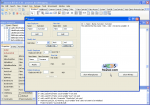
The principle of inheritance involves the encapsulation mechanism too; so that we must pay attention to its usage.
In facts when we design a class and decide which items must be public or not, we bind them to precise ranges of action.
But now we add another degree in decision, because of the hypothetical necessity to design a class which at least to derive another one from.
This means that the inheriting classes receive all the parent's features exactly as they're written: private stuff to private, public stuff to public.
A last choice exists, under the protected zone (see in any class code we publish); but we'll see it next time.
But... why to inherit a class?
Certainly not to have just a copy, because it would be useless.
Surely to specialize the original class, called father, into a new one, called child.
A common example is the human being, which can become man and woman, for example.
